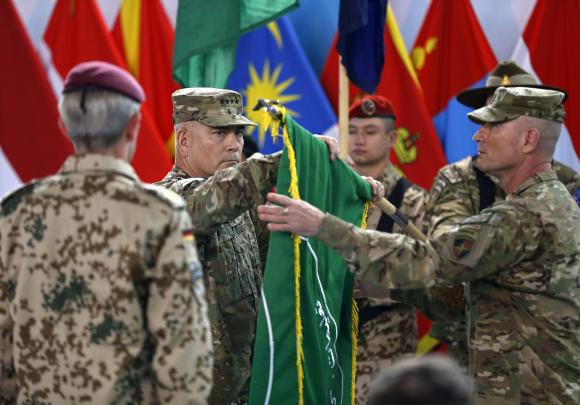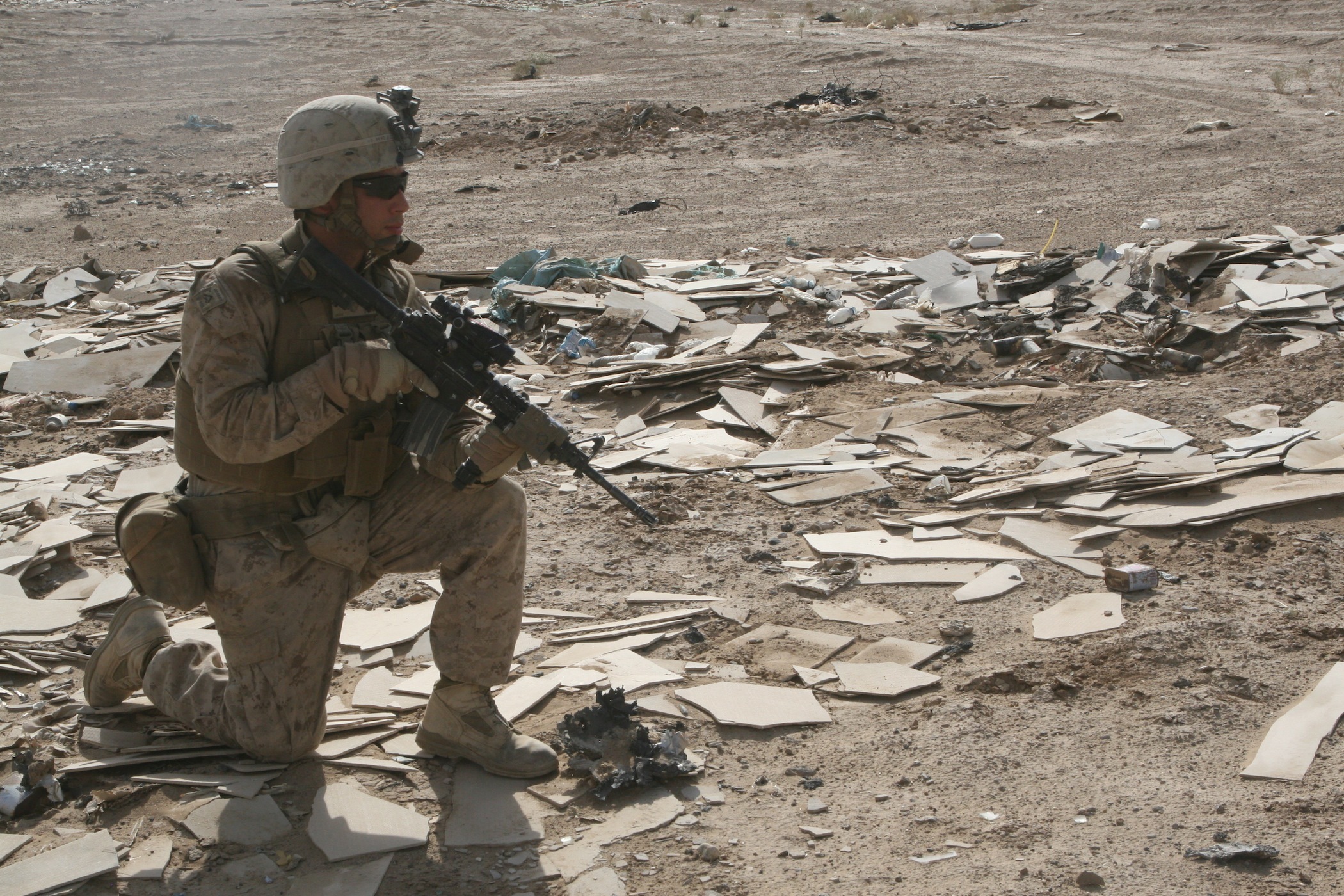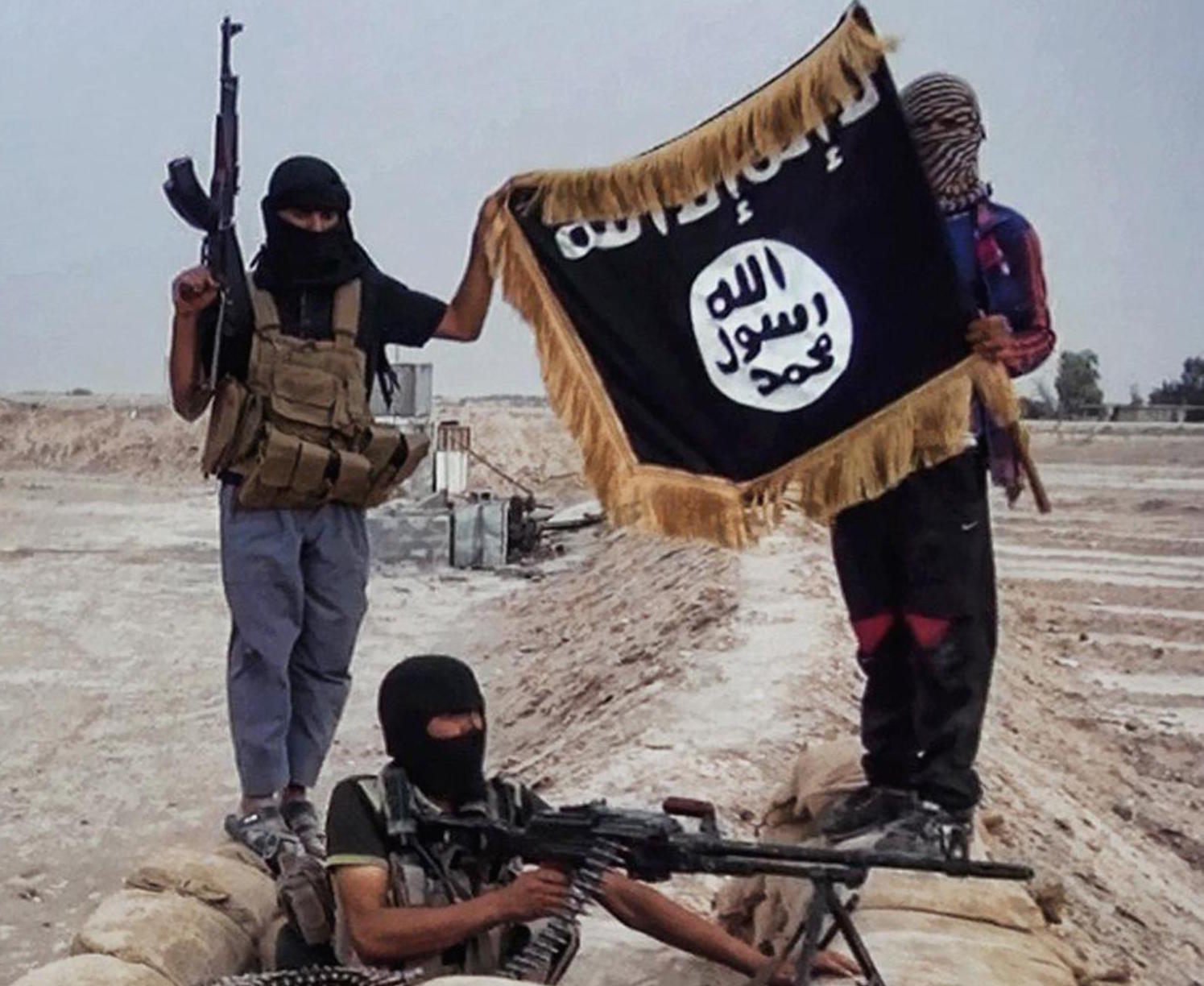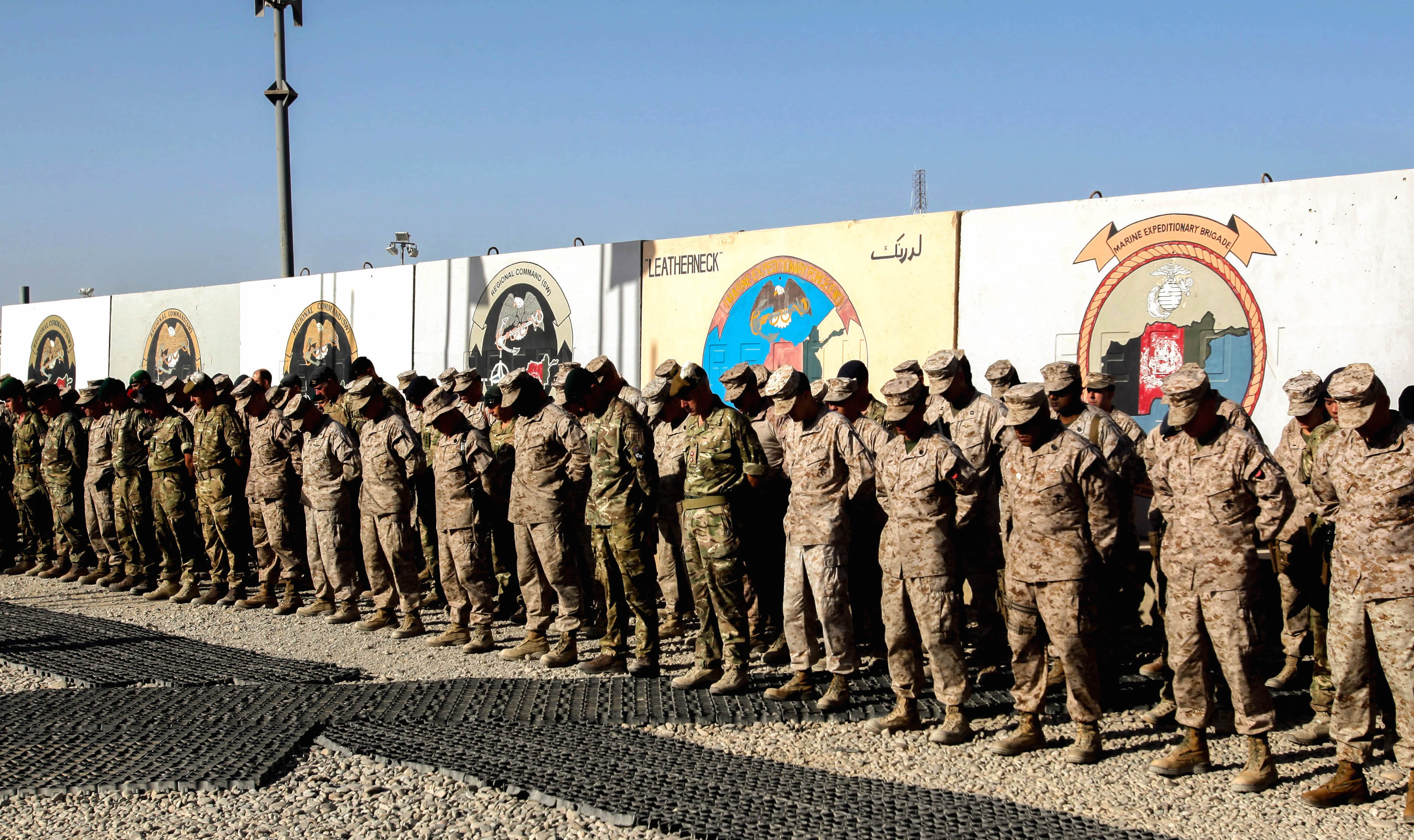
All Americans remember where they were when they learned about the terrorist attacks of Sept. 11, 2001, but few Americans noticed—and fewer seemed to care—when Gen. John Campbell rolled up the International Security Afghanistan Force (ISAF) battle flag on Dec. 28. That ceremonial act officially and symbolically ended the ISAF combat mission in Afghanistan.
The news of the end of that mission hit my ears as I was grading papers for the Naval War College’s “Strategy and War” course of study.
Most of my students are part of the generation of officers that fought, or continue to fight, the overseas contingency operations formerly known as the Global War on Terror (GWOT).
I highlighted the following phrase in the essay of one such GWOT veteran, helicopter pilot Chris Grocki.
He wrote that the Revolutionary War “. . . has served as a model for hundreds of years of future insurgencies and asymmetric conflicts. However, as in other asymmetric conflicts in which the weaker side was ultimately successful, it was the mistakes of the stronger side . . . that most influenced the final result.”
“How fitting,” I thought, as we ponder the end (or given our predicament in Iraq—perhaps the first end?) to what many characterize as America’s longest war.
Using my student’s astute observation as portal to examine the asymmetric conflict in Afghanistan, it is first apparent that the weaker side in Afghanistan has not yet proved to be completely successful. With considerable sacrifice and expense over the past 13 years, the Taliban and al Qaeda forces have been suppressed, but as the all-too-persistent Taliban attacks and bombings in Afghanistan remind us, the fighting is far from over.
The War in Afghanistan began with a “shock and awe” campaign on Oct. 7, 2001.
When the missiles and bombs were finally unleashed, most Americans indeed felt some degree of joy that vengeance was being exacted on the perpetrators of the 9/11 attacks.
Those, like myself, who were packing their bags and getting ready to deploy in support of the GWOT, were perhaps fearful that in the weeks preceding the shock and awe opening act, we had dialed-in our response to our al Qaeda enemies.

Perhaps what was most shocking about the opening salvo against our enemies in Afghanistan is that it took 26 days to muster a response. The opportunity for a rapid and truly shocking response was lost. For a nation with rapid global response capabilities, that plodding may have been the first mistake made by the “stronger side” in an asymmetric war that has dragged on for more than 13 years.
Ignoring the advice the pre-eminent British historian, John Keegan, offered the Bush administration to “. . . steer clear of general war and of policies designed to change society or the government . . . [and] get in fast, kill faster, and get out still faster,” was arguably the second mistake of the stronger power in the conflict.
After toppling the Taliban regime in a few short weeks and killing scores of al Qaeda and Taliban fighters, we then decided to stay and engage in nation-building.
What grade would we objectively be given for the nation we have built in the past 13 years?
If an A grade equates to creating a bulwark for democracy in the heart of central Asia, then we are clearly falling short of that mark. Because so many Americans think (and many others fear) that we’ll have to stay a lot longer, all sides can agree that Afghanistan is still far from being categorized as strong and stable.
I would offer that the agreement to keep ground troops and airpower in Afghanistan is evidence that we currently rate an “incomplete.” The final grade is still pending.
Is this really the end of America’s war in Afghanistan? In a statement released on 30 December, Speaker of the House John Boehner (R-OH) lamented the end of ISAF’s combat mission, worrying that the Obama administration is poised to repeat the same mistake that Boehner and others believe it made in Iraq. That “mistake” was the complete withdrawal of forces from Iraq and the rise of ISIS.

The fact of the matter is, the United States is not drawing down to zero any time soon in Afghanistan; rather, the Pentagon reports that 11,000 U.S. troops will remain in Afghanistan to train and assist the Afghan armed forces. The United States has also recently agreed to an Afghan government request to provide airpower for critical situations on the ground. While the U.S. presence is significantly reduced, it will likely be far from zero for years to come. In contrast to Boehner’s statement, some sources, such as journalist George Zornick, suggest that the US is now setting the stage for expanding its mission in Afghanistan.
Whether it is 11,000 troops, plus occasional airstrikes in 2015, something more, or something less, it does not appear that U.S. troops will really be out of Afghanistan for many years to come. While those in Washington are using this opportunity to poke each other in the eye for political points, important questions are left unaddressed. Chief among them: What strategic benefits did the cost and sacrifice of the past 13 years of war yield to the United States? By some estimates the post 9/11 wars have now cost close to $3 trillion. What is the strategic return on this investment of blood and treasure?
Whether or not our withdrawal from Iraq led to the rise of Islamic State in Iraq and Syria (ISIS, or ISIL) is a topic for another day, but as a quick point of comparison, suffice it to say that even when ISAF forces numbered 180,000, the Taliban still controlled 30-to-40 percent of the territory in Afghanistan. The deterrent power of U.S. combat forces, while unlimited in the imagination of some politicians and many American citizens, does seems to have real limits on the battlefields of the post 9/11 wars. Those that are so quick to commit U.S. ground forces in response to every threat that emerges (i.e., Syria, ISIS and Iran) should keep that fact in mind.

Whether or not our presence makes a difference in deterring evil forces such as ISIS and the Taliban—and there’s no doubt that it does—the more important question we should be asking today is this: Why do the armies we trained and equipped in Afghanistan, and previously in Iraq, fail to measure up in the fight against the insurgent forces they confront?
An open-minded view of post-World War II U.S. history shows a pattern of failure when it comes to nation-building. The obvious examples are South Vietnam, Afghanistan, and Iraq, but there are many more, less obvious, cases. That skill set does not appear to be in our wheelhouse, so from this point forward we should probably avoid the temptation to try to mold ancient cultures into pro-Western democracies.
It seems that some in America already are weaving the myths to try to explain the “less than satisfying” results in Afghanistan and Iraq. As a young man I often heard these same strategically ill-informed opinions about Vietnam. They went something like . . . If only LBJ had allowed us to bomb every target . . . if only we had the green light to invade North Vietnam . . . if only the Marine Corps’ better understanding of pacification had been shared by the Army . . . we could have won the war! I have recently heard a number of so-called average Americans re-package the same “if only we had been tougher” alibis from Vietnam and pin them on the post 9/11 wars. These emerging sentiments are evidence that those Americans who have taken notice that those wars continue are looking for a reason why this conflict did not end conclusively. Perhaps a victory parade through New York City would serve to mark the occasion? We had one after Operation Desert Storm, and it sure was a nice way to mark the end of a war.
As a multi-tour veteran of Afghanistan and Iraq, from my vantage point at least, it did not appear we were going soft on our enemies. Few targets, even those in Pakistan were “off limits.” We killed or captured every bad guy we could locate, we even occupied entire nations, helped write constitutions, operated freely in the air, and the land below, yet despite this, the nations we built remain unstable and dangerous places. The reason for our less than satisfying results are something deeper than “we should have been tougher on our enemies.”

As this phase in the Afghanistan War draws to a close, the best thing we can do to honor those who served in our longest war is to have an open-minded conversation about how we can do better in the future. My student’s essay, which started this musing, contains a timeless truth of strategy and war: “[In] asymmetric conflicts in which the weaker side was ultimately successful, it was the mistakes of the stronger side . . . that most influenced the final result.” The end of a war is a perfect opportunity for national self-reflection. Understanding our mistakes, appreciating the limits of the military instrument of power—even when it is “the finest in the world”—and avoiding unwinnable wars are just a few lessons with which to start.
The question to get you started: Where were you when you found out that America’s war in Afghanistan had ended?




